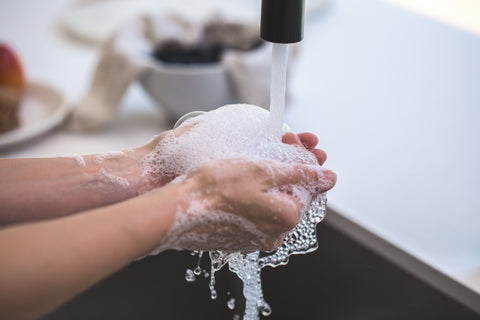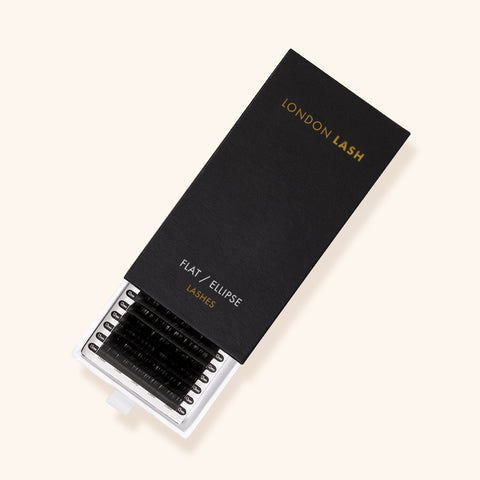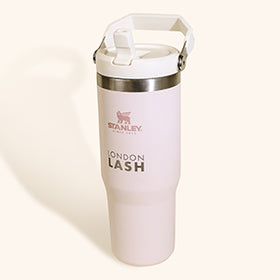The Curse of Blepharitis: A Scary Lash Tale for Lash Technicians
Halloween is creeping around the corner, and while we're all excited about those bewitching lash transformations, it's crucial to keep an eye out for something not-so-magical that might haunt your clients: blepharitis.
Don't worry; it's not as sinister as it sounds, but it can be a real fright for your clients if left untreated. So let’s shed some light on what blepharitis is, how it can impact your lash services, and what you can do to keep those spooktacular lashes safe and sound!
What is Blepharitis?
Blepharitis is an inflammation of the eyelids, often caused by bacteria, allergies, or even pesky eyelash mites. The symptoms can be quite eerie, ranging from mild irritation to redness, swelling, and flakes or crusts around the eyelids. Sometimes, it can even make your clients' lashes fall out prematurely. In short, it's a nightmare for anyone looking to have their lashes done, and definitely not the treat we want for them!

Ghoulish Symptoms: What are the Symptoms of Blepharitis?
Just like a spooky ghost, blepharitis can sneak up on your clients without warning! Some common symptoms include:
Redness and Swelling: Imagine your clients showing up for a lash appointment with puffy, red eyes. Definitely not the look they were going for!
Itching and Burning: Blepharitis can make your clients feel like they've got an army of creepy crawlies in their lashes, causing itching and burning sensations.
Crusty Lashes: The curse of crusty, sticky residue on the lashes.
Watery Eyes: Your clients might experience excessive tearing, making it challenging to apply the lash extensions.
The Witch's Brew: What Causes Blepharitis?
Demodex Mites: An overabundance of these tiny critters can take up residence in eyelash follicles, causing inflammation. Suggest using a gentle lash cleanser and eyelash brush to keep them at bay by regularly cleaning the natural lashes.
Dry Spells: Dry eyes and blepharitis are like partners in crime. Make sure your clients stay well-hydrated and seek advice from their doctor to help with the hydration of their eyes.
Cosmetic Curses: Low-quality makeup and lash products can be a real hex on your client's eyes. Encourage them to invest in high-quality, hypoallergenic products.
Bacterial Invasion: Staphylococcus bacteria can creep onto the lash line and cause trouble. Encourage your clients to avoid touching their eyes, to prevent bacteria from their hands being transferred to their eyes.

The Scary Impact of Blepharitis on Lash Extensions
Every Lash Technician’s goal is to create gorgeous lash extensions that enhance our clients' beauty. However, when blepharitis enters the scene, it can be like dealing with a Halloween trick instead of a treat!
Lash Glue Issues: Blepharitis can disrupt the lash glue bond between natural lashes and eyelash extensions, which can lead to premature lash shedding.
Itching and Discomfort: Clients with blepharitis may experience itching and discomfort, which can be exacerbated by lash extensions. It's like having an itch that just won't quit.
Infection Risk: If not handled with care, blepharitis can lead to an increased risk of eye infections.

Preventing the Haunting: How Do You Prevent Blepharitis?
Prevention is the key to keeping blepharitis at bay. As Lash Technicians, you can also play a role in preventing it for your clients. So, what can you do to prevent blepharitis from haunting your lash studio? Here are some tips:
Client Consultation: Always conduct a thorough consultation to identify any existing eye conditions or symptoms. If you suspect blepharitis, advise your client to seek medical advice before scheduling their lash appointment.
Cleanse Before You Lash: Always start with a thorough cleansing of your client's lashes with a solid pretreatment routine before applying eyelash extensions. This ensures that you're working on a clean canvas.
Educate Your Clients: Teach your clients about the importance of good lash hygiene and share these tips with them. Make sure your clients are aware of the symptoms of blepharitis and encourage them to seek treatment if they suspect they have it. Knowledge is power, and they'll appreciate your expertise.
Lash Selection: Opt for lightweight lash extensions like Matt Flat lashes to minimise stress on the natural lashes. Heavy eyelash extensions can exacerbate blepharitis symptoms.
Maintain Hygiene: Maintain strict hygiene practices when applying lash extensions to reduce the risk of infection, including handwashing, disinfection of tools, and using disposable lash wands and applicators for each client. This helps prevent the spread of bacteria.
Avoid Lash Extensions During Flare-Ups: If your clients have an active blepharitis flare-up, it's best to postpone their lash appointment until their eyes are healthy again. Lash extensions can exacerbate the condition, as the added weight of eyelash extensions can put extra stress on the natural lashes and the already inflamed eyelids, making them uncomfortable and potentially worsening their symptoms. Additionally, if you're not careful, the eyelash glue you use for lash extensions can trap debris and bacteria, leading to more severe blepharitis or even an eye infection. Definitely not the Halloween treat your clients were hoping for!
Recommend Professional Care: Encourage clients with persistent blepharitis to see a doctor for proper diagnosis and treatment.

Exorcising Blepharitis: How Do You Treat Blepharitis?
Hydration Magic: Remind them to blink more often and reduce any eye strain with the 20:20:20 rule, especially if they're spending hours staring at their spell books, we mean, screens.
Lash Maintenance: Advise your clients to avoid heavy makeup on their lashes and to be gentle when cleaning their lash extensions. Vigorous rubbing can worsen the symptoms.
Doctor's Orders: If things get too spooky, suggest they seek advice from an eye doctor. They might need a prescription for antibiotic ointments or other treatments.
Cleansing Ritual: Recommend a gentle lash cleanser and lash brush as part of their daily routine. This will help keep bacteria at bay. Why not take this opportunity to make some extra income by retailing your own lash aftercare kit? It’s an excellent way to encourage your clients to look after their lashes, maintain amazing lash retention, and boost your profits!

In the world of Lash Technicians, Halloween is an exciting time to help clients transform into their favourite spooky characters. While blepharitis might lurk in the shadows, being armed with knowledge and a commitment to hygiene means you can ensure your lash services remain enchanting and problem-free.
Remember, safety comes first! By taking these precautions, you'll not only create stunning lash looks but also keep your clients' eyes healthy and happy throughout the Halloween season and beyond. Happy lashing!





















